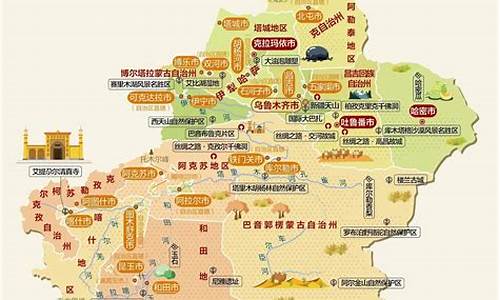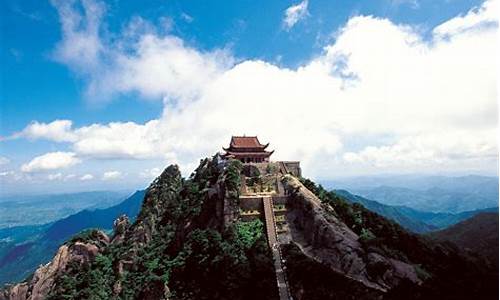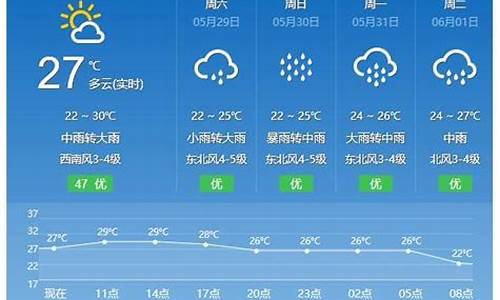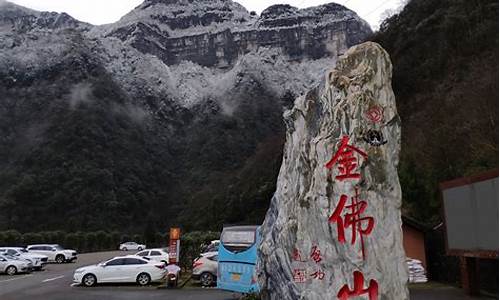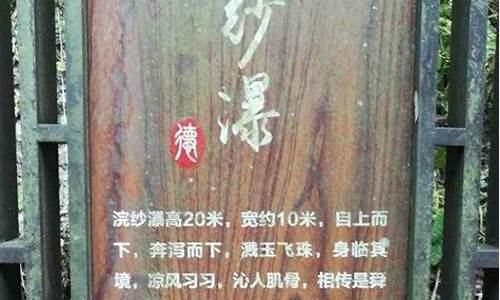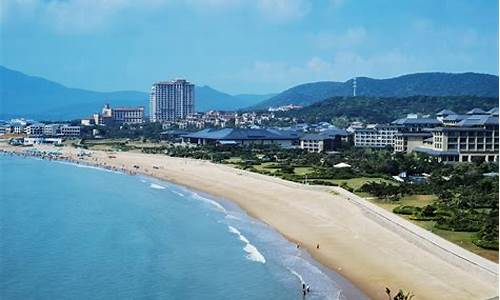日本景点介绍中英对照_日本景点介绍英文
好久不见了,今天我想和大家探讨一下关于“日本景点介绍中英对照”的话题。如果你对这个领域还不太了解,那么这篇文章就是为你准备的,让我们一起来学习一下吧。
1.日本长崎旅游景点
2.日本景点介绍(英文)
3.求日本京都著名景点的英文介绍
4.介绍日本风景的英语短文

日本长崎旅游景点
1、平和公园:长崎平和公园是为纪念世界和平而建的公园,内有和平祈愿像和和平之泉等设施。每年8月9日会举行和平纪念仪式。2、哥拉巴园:哥拉巴公园内隐藏着两个“心”,可能是心型地砖或墙砖,可以碰碰运气。
3、稻佐山夜景:稻佐山的夜景是长崎市的标志性景点之一,也是热门的夜景观赏地点。
4、长崎新地中华街:位于长崎市新地町,与横滨中华街、神户南京町并列为日本三大中华街,有约40家中华料理店和中国杂货店。
5、大浦天主堂:创建于1865年,供奉着因天主教教令颁布而殉难的26位圣者。
6、眼镜桥:横跨中岛川的古老拱形石桥,倒映在水中宛如一副眼镜,因此得名。
7、长崎原爆资料馆:坐落在被炸毁的教堂上,墙上挂着一面被冲击波毁坏变形的时钟,时针停在11:02。
8、长崎滨市商店街:拥有大丸百货商店、滨屋百货商店等约700家店铺的商业街,附近还有寺院和神社等旅游景点。
日本景点介绍(英文)
agoya
Japan's major port city.A potential Iraq Bay.Because in Tokyo and Kyoto (Xijing) between,commonly known as the Beijing.Population 2116000.Nagoya,Aichi is the seat of the county government.Second only to Tokyo,Osaka and Yokohama of Japan's fourth largest city.Located in the central parts of western Honshu,endangered Iraq Potential Bay.An area of 328 square kilometers.The city is divided into 16 administrative region.Central District,the geothermal field,as well as its adjacent areas is the town center.Land,sea and air transport hub and business center.The core industrial zone in Beijing,early in the textile industry,ceramics manufacture mainly after developing the automotive,steel,electronics,aircraft,printing,chemical,and other industries.Natural port for the nation's third-largest trading port and one of the world Chittagong.
这是介绍日本的名古屋.
日本主要港口城市.一个潜在的伊拉克湾.因为在东京和京都(西京)之间,俗称北京.人口为2116000.爱知县政府坐落在名古屋.是仅次于东京,大阪和横滨的日本第四大城市.位于中央部分,本州岛西部,濒临伊势湾.面积328平方公里.全市划分为16个行政区.中心区,地温场,以及邻近地区的城镇中心.陆地,海上和空中的交通枢纽和商贸中心.核心工业区在北京,早期以纺织工业,陶瓷制造为主,后发展汽车,钢铁,电子,航空,化工,印刷,和其他行业.天然港口,为全国第三大贸易港口之一和世界大港.
求日本京都著名景点的英文介绍
1. 富士山 Mount Fuji
Mount Fuji (Fujisan) is with 3776 meters Japan's highest mountain. It is not surprising that the nearly perfectly shaped volcano has been worshipped as a sacred mountain and experienced big popularity among artists and common people.
Mount Fuji is a dormant volcano, which most recently erupted in 1708. It stands on the border between Yamanashi and Shizuoka Prefectures and can be seen from Tokyo and Yokohama on clear days.
The easiest way to view Mount Fuji is from the train on a trip along the Tokaido Line between Tokyo and Osaka. If you take the shinkansen from Tokyo in direction of Nagoya, Kyoto and Osaka, the best view of Mount Fuji can be enjoyed from around Shin-Fuji Station on the right hand side of the train, about 40 to 45 minutes after leaving Tokyo.
Note however, that clouds and poor visibility often block the view of Mount Fuji, and you have to consider yourself lucky if you get a clear view of the mountain. Visibility tends to be better during the colder seasons of the year than in summer, and in the early morning and late evening hours.
If you want to enjoy Mount Fuji at a more leisurely pace and from a nice natural surrounding, you should head to the Fuji Five Lake (Fujigoko) region at the northern foot of the mountain, or to Hakone, a nearby hot spring resort.
Mount Fuji is officially open for climbing during July and August via several routes...
2.东京:Tokyo
3.大阪 Osaka
4.名古屋;Nagoya
5.神户;Kobe
介绍日本风景的英语短文
Arashiyama(岚山)
Arashiyama (岚山 ?) is a district on the western outskirts of Kyoto, Japan. It also refers to the mountain across the ?i River, which forms a backdrop to the district.
Notable tourist sites in Arashiyama include
The Iwatayama Monkey Park on the slopes of Mount Arashiyama. Over 170 monkeys live at the park. While the monkeys are wild, they have become accustomed to humans. The park is located on a small mountain not far from the Saga-Arashiyama rail station. Visitors can approach and photograph the monkeys. At the summit is a fenced enclosure, from within which visitors can feed the monkeys.
The romantic "Moon Crossing Bridge" (渡月桥,Togetsukyō), notable for its views of cherry blossoms and autumn colors on the slopes of Mt Arashiyama.
The tombstone of the Heike courtesan Kogo of Sagano.
Tenryū-ji, the main temple of the Rinzai school, one of the two main sects of Zen Buddhism in Japan.
The hamlet of Kiyotaki, a small scenic village at the base of Mt Atago, the home to a notable Shinto shrine.
Matsuo Shrine, half a mile south of the area, which is home to a blessed spring. It is also one of the oldest shrines in the Kyoto area, founded in 700. The alleged restorative properties of the spring bring many local sake and miso companies to the shrine for prayers that their product will be blessed.
Kameyama koen has a stone commemorating Zhou Enlai's visited to Arashiyama. He was moved by the cherry blossoms and mountain greenery. The four poems Zhou Enlai wrote about his visit are engraved on a stone monument: "Arashiyama in the Rain."
Nijō Castle(二条城)
Nijō Castle (二条城 ,Nijō-jō?) is a flatland castle located in Kyoto, Japan. The castle consists of two concentric rings of fortifications, the Ninomaru Palace, the ruins of the Honmaru Palace, various support buildings and several gardens. The surface area of the castle is 275,000 square meters, of which 8000 square meters is occupied by buildings.
History
Present plan of Nijō Castle (click for detailed view)In 1601, Tokugawa Ieyasu, the founder of the Tokugawa Shogunate, ordered all the feudal lords in Western Japan to contribute to the construction of Nijō Castle, which was completed during the reign of Tokugawa Iemitsu in 1626. Parts of Fushimi Castle, such as the main tower and the Kara Gate, were moved here in 1625-26.[1] It was built as the Kyoto residence of the Tokugawa Shoguns. The Tokugawa Shogunate used Edo as the capital city, but Kyoto continued to be the home of the Imperial Court. Kyoto Imperial Palace is located north-east of Nijo Castle.
The central keep, or donjon, was struck by lightning and burned to the ground in 1791.
In 1788, the Inner Palace was destroyed by a city-wide fire. The site remained empty until it was replaced by a prince's residence transferred from the Kyoto Imperial Palace in 1893.
In 1867, the Ninomaru Palace was the stage for the declaration by Tokugawa Yoshinobu, returning the authority to the Imperial Court. Next year the Imperial Cabinet was installed in the castle. The palace became imperial property and was declared a detached palace. During this time, the Tokugawa hollyhock crest was removed wherever possible and replaced with the imperial chrysanthemum.
In 1939, the palace was donated to the city of Kyoto and opened to the public the following year.
Ryōan-ji(龙安寺)
Ryōan-ji (Shinjitai: 竜安寺, Kyūjitai: 龙安寺 ?, The Temple of the Peaceful Dragon) is a Zen temple located in northwest Kyoto, Japan. Belonging to the Myoshin-ji school of the Rinzai branch of Zen Buddhism, the temple is one of the Historic Monuments of Ancient Kyoto, a UNESCO World Heritage Site.
The site of the temple was originally a Fujiwara family estate. It eventually came into the hands of the Hosokawa clan branch of the Fujiwaras. Hosokawa Katsumoto inherited the residence, and lived here before the ?nin War. Katsumoto willed the war-ravaged property to be converted into a Zen sect temple complex after his death. Later Hosokawa emperors are grouped together in what are today known as the "Seven Imperial Tombs" at Ryoan-ji. The burial places of these emperors -- Uda, Kazan, Ichijō, Go-Suzaku, Go-Reizei, Go-Sanjō, and Horikawa -- would have been comparatively humble in the period after their deaths. These tombs reached their present state as a result of the 19th century restoration of imperial sepulchers (misasagi) which were ordered by Emperor Meiji.[1]
Ryōan-ji's tsukubai (蹲踞 ?), which is a small basin provided at Japanese Buddhist temples for visitors to purify themselves by the ritual washing of hands and rinsing of the mouth.An object of interest near the rear of the monks quarters is the carved stone receptacle into which water for ritual purification continuously flows. This is the Ryōan-ji tsukubai (蹲踞 ?), which translates literally as "crouch;" and the lower elevation of the basin requires the user to bend a little bit to reach the water, which suggests supplication and reverence.[2] The kanji written on the surface of the stone are without significance when read alone. If each is read in combination with 口 (kuchi), which the central bowl is meant to represent, then the characters become 吾, 唯, 足, 知. This is read as "ware tada taru (wo) shiru" and translates literally as "I only know plenty" (吾 = ware = I, 唯 = tada = only, 足 = taru = plenty, 知 = shiru = know). The meaning of the phrase carved into the top of the tsukubai is simply that "what one has is all one needs" and is meant to reinforce the basic anti-materialistic teachings of Buddhism.
The absence of a dipper is intended to imply that the water is for the soul only and that it is necessary to bend the knee in humility in order to receive its blessing.
Kiyomizu-dera(清水寺)
Kiyomizu-dera (清水寺 ?), full name Otowa-san Kiyomizu-dera (音羽山清水寺 ?) is an independent Buddhist temple in eastern Kyoto. The temple is part of the Historic Monuments of Ancient Kyoto (Kyoto, Uji and Otsu Cities) UNESCO World Heritage site.[1] Not one nail is used in the whole temple. The temple should not be confused with Kiyomizu-dera in Yasugi, Shimane, which is part of the 33-temple route of the Chūgoku 33 Kannon Pilgrimage through western Japan.[2]
其实这些都是维基百科找来的,本来想给链接的,百度说我有广告,只贴了部分,其他的可用google 维基百科英文版找,包括景点介绍,历史什么的很全的。
富士山:Mount Fuji is the highest mountain in Japan at 3,776 m (12,388 ft). An active volcano that last erupted in 1707-08, it straddles the boundary of Shizuoka and Yamanashi prefectures just west of Tokyo, from which it can be seen on a clear day. It is located near the Pacific coast of central Honshū. Three small cities surround it: Gotemba (east), Fujiyoshida (north) and Fujinomiya (southwest).Mount Fuji's exceptionally symmetrical cone is a well-known symbol of Japan and it is frequently depicted in art and photographs, as well as visited by sightseers and climbers.
今天关于“日本景点介绍中英对照”的讨论就到这里了。希望通过今天的讲解,您能对这个主题有更深入的理解。如果您有任何问题或需要进一步的信息,请随时告诉我。我将竭诚为您服务。
声明:本站所有文章资源内容,如无特殊说明或标注,均为采集网络资源。如若本站内容侵犯了原著者的合法权益,可联系本站删除。

